One day, when historians look back at graphics cards that changed the course of gaming, Nvidia’s GeForce RTX 20-series could very well claim a top spot. But what does that mean for gamers who invested in the cutting-edge GPUs on day one? With Nvidia teasing the GeForce RTX 3090’s radical redesign ahead of a September 1 reveal of its next-gen graphics cards, we reflect on the last two years of ray-traced games, DLSS evolutions, and price drops to find the answer.
Overall, it’s a mixed bag. While there have been some standout wins among Nvidia’s RTX technologies, there have been some considerable hiccups as well, and far fewer games than Nvidia had led us to expect.
Minecraft RTX sure is a glorious feast for the eyes, though.
How RTX changed the game for better
Released in September 2018, Nvidia’s debut RTX GPUs bristled with technologies that pushed gaming forward.
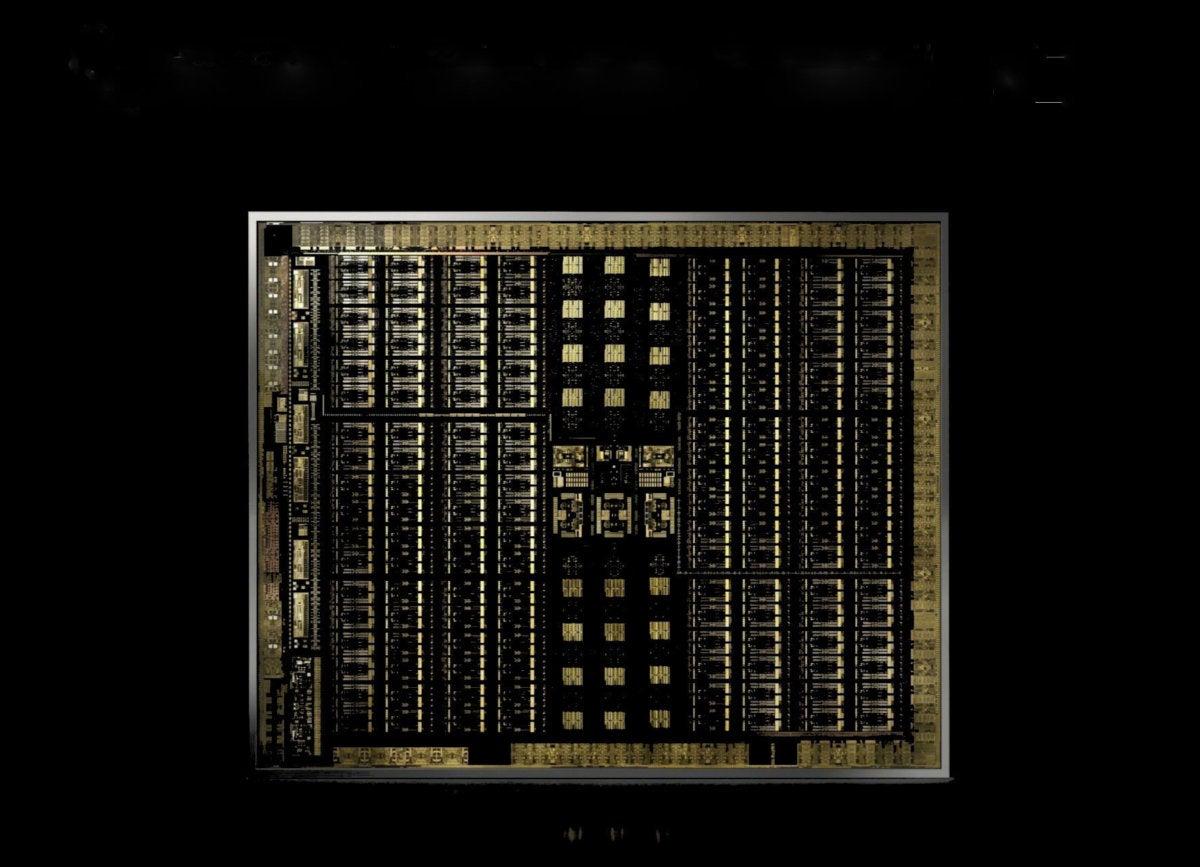 Nvidia
Nvidia
The Turing architecture-based TU102 GPU inside the GeForce RTX 2080 Ti.
The highlight, of course, is real-time ray tracing. Nvidia built upon Microsoft’s fresh DirectX Raytracing API to introduce the first graphics cards capable of running these cutting-edge lighting effects at frame rates actually worth playing, thanks to the inclusion of dedicated “RT cores” to process the tasks. The GeForce RTX 20-series also swiped a trick from Nvidia’s data center siblings, including “tensor cores” that brought the power of machine-learning to bear on games, using AI to improve frame rates (and lessen the performance hit that ray tracing imparts) with its Deep-Learning Super Sampling (DLSS) technology.
Outside of the specific RTX technologies, new variable rate shading and mesh shading technologies in Nvidia’s “Turing” GPUs gave developers smart tools to unlock higher speeds in complex scenes. Hell, the unrivaled GeForce RTX 2080 Ti was even the first consumer graphics card capable of pushing beyond the 60fps barrier with no visual compromises at 4K resolution, unleashing a new breed of ultra-fast 4K gaming monitors. Nvidia even offered automatic one-click overclocking tools to push every ounce of power out of your particular RTX GPU, which AMD’s Radeon software mimicked mere months after.
Nvidia’s advances were so significant that many served as the cornerstone of Microsoft’s DirectX 12 Ultimate API, “a force multiplier for the entire gaming ecosystem” that tied Windows PCs and the next-gen Xbox series X console together technologically. They were so significant that Nvidia dropped its iconic “GTX” branding for graphics cards with ray-tracing hardware inside, opting for “RTX” instead. The GeForce RTX 20-series will go down in history as the foundation for an entire generation of games.
How RTX changed the game for worse
Yes, Nvidia’s new-look hardware truly changed the game, and in more ways than one. Not all proved welcome.
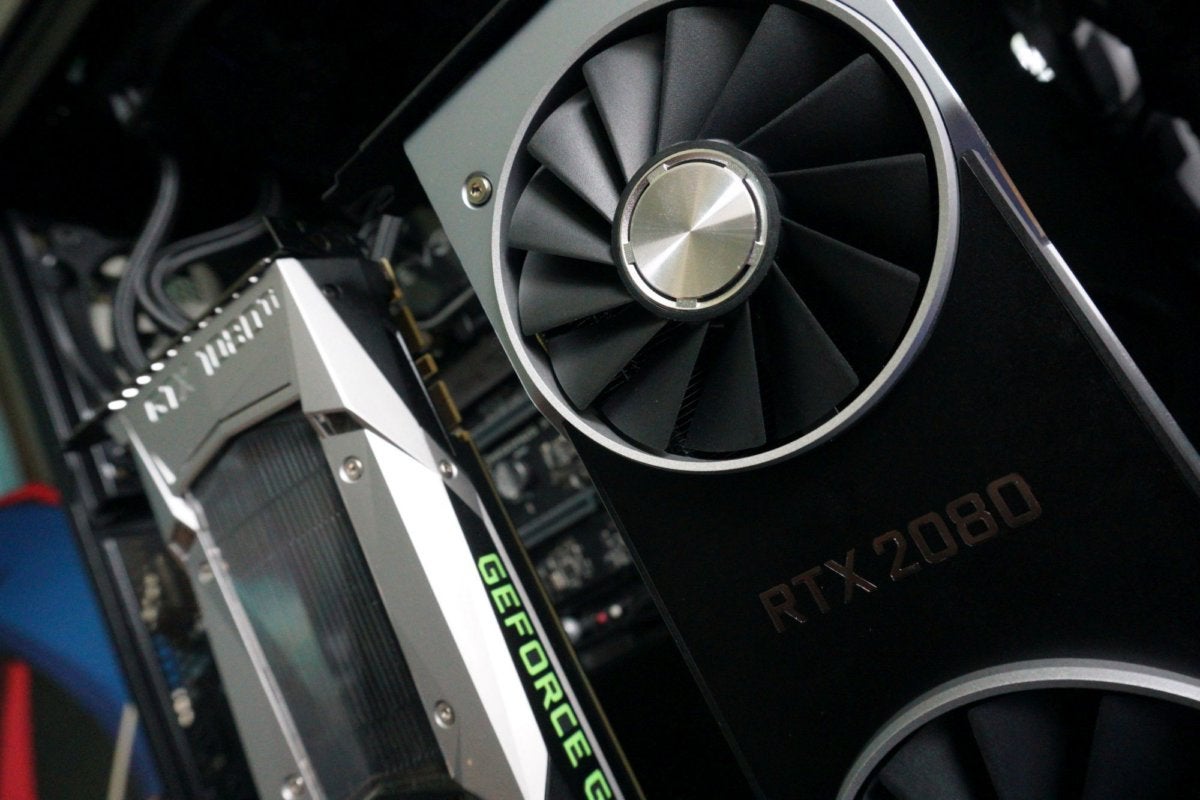 Brad Chacos/IDG
Brad Chacos/IDG
The GeForce RTX 2080 cost the same as the GTX 1080 Ti did at launch, but with no boost in traditional gaming performance.
The GeForce RTX 20-series options launched at much higher prices than their predecessors. While the older GTX 1080 launched at $600, the RTX 2080 debuted at $700, and the GeForce RTX 2070 carried a similar $100 premium. (Actual prices were $100-plus more on the street for the first couple months.) The GeForce RTX 2080 Ti, meanwhile, cost a staggering $1,200—a whopping $500 more than the GTX 1080 Ti. Nvidia said $999 models would appear, and a handful did, but these mere triple-digit RTX 2080 Ti offerings were mostly marketing vaporware.
The reception turned even more chilly after reviews landed. While these GPUs unlocked ray-tracing capabilities that were practically impossible before, thanks to their dedicated RT and tensor cores, traditional gaming performance stayed stagnant at the same price points. Sure, the unprecedented GeForce RTX 2080 Ti delivered an unprecedented (and still unmatched) 4K gaming experience. But the $700 GeForce RTX 2080 performed neck-and-neck with the GTX 1080 Ti, a card that cost $700 when it launched a year prior—another unprecedented turn. The $500 RTX 2070 likewise delivered frames on par with the $500 GTX 1080 that launched two years earlier.
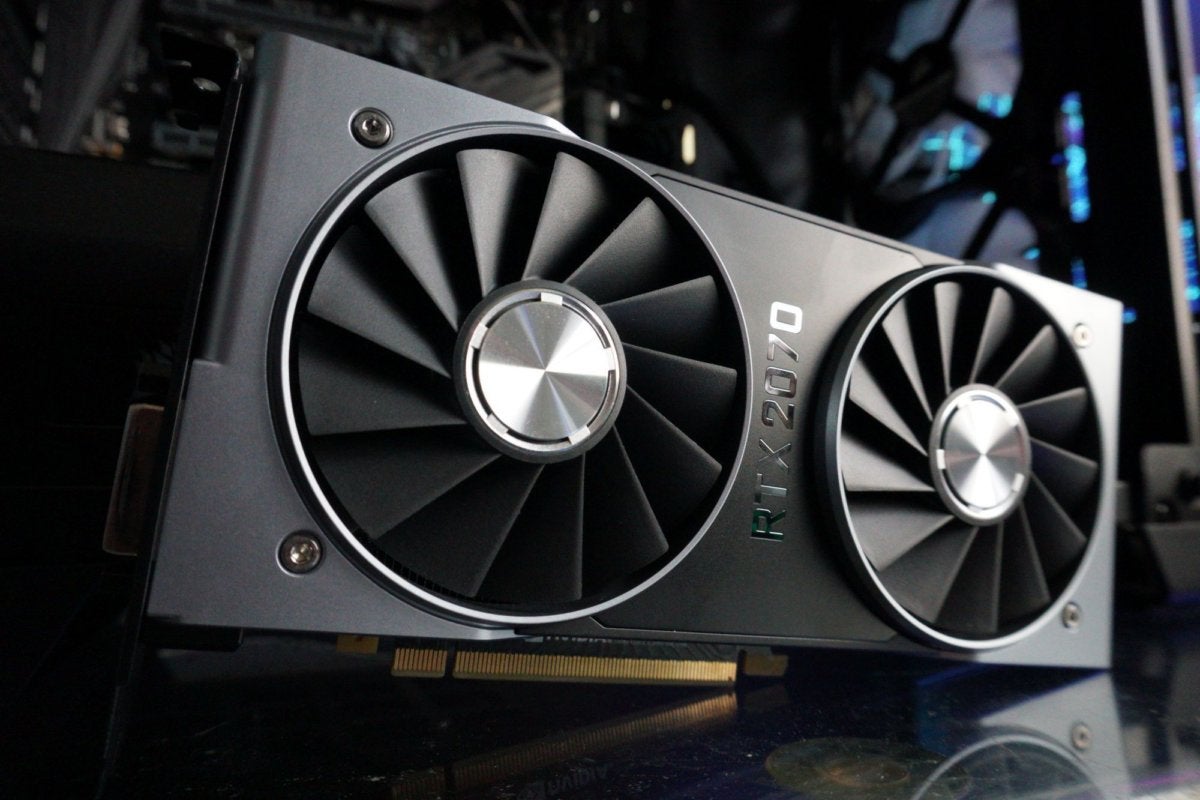 Brad Chacos/IDG
Brad Chacos/IDG
The dual-fan Founders Edition design introduced with the GeForce RTX 20-series sure looks good.
Gamers weren’t thrilled, and a few months after launch, Nvidia admitted to investors that RTX didn’t sell as well as expectated. (A year later, the RTX Super refresh and a price drop for the GeForce RTX 2060 spurred by AMD’s Radeon resurgence gave sales a boost.)
Enthusiasm for the cards was also hampered by the slow arrival of actual ray-traced games.
Real-time ray tracing: Slowly building steam
Riding the bleeding-edge comes with with some pain, and that’s never been truer than with the GeForce RTX 20-series launch.
“Could be. If. When. So much of the GeForce RTX 2080 and GeForce RTX 2080 Ti’s true potential lies in technologies that simply aren’t available today, even for reviewers,” we said in our review of those cards, taking the unusual step of not rendering a final, rated verdict on day one. Even if you bought into Nvidia’s vision of a ray-traced future, zero games actually supported ray tracing or DLSS when these high-priced graphics cards launched. You were literally buying the promises.
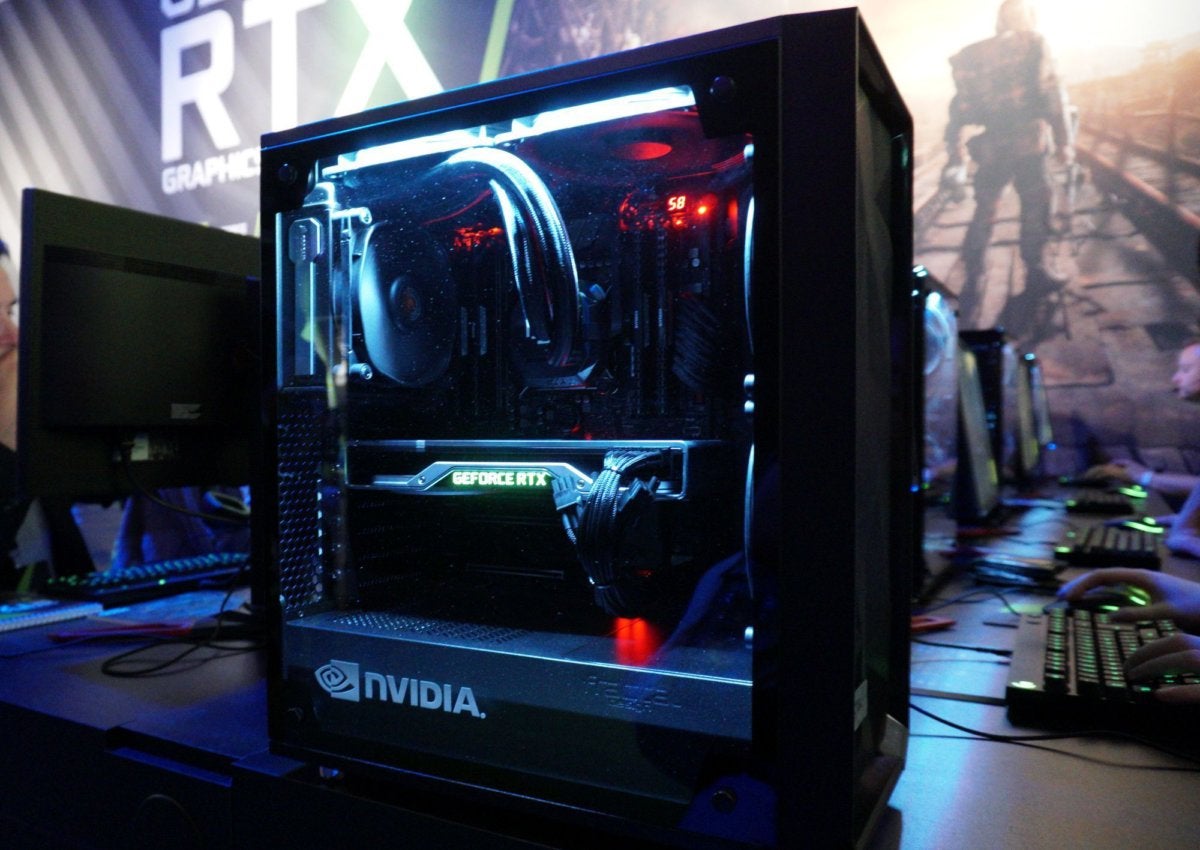 Brad Chacos/IDG
Brad Chacos/IDG
Taken at the GeForce RTX 20-series launch event in Cologne, Germany.
Hell, even Windows couldn’t handle real-time ray tracing yet. The GeForce RTX 2080 and 2080 Ti launched on September 20, 2018; before you could even possibly run ray tracing, you needed to upgrade to the Windows 10 October 2018 Update, which introduced the critical DirectX Raytracing API that underpins the entire ray-tracing and RTX endeavors. And despite the name, Microsoft didn’t release the update until mid-November.
You didn’t have to wait long after that to get your first taste of the cutting-edge lighting technology. Battlefield V, Nvidia’s key RTX partner, launched mere days later with immediate support for ray-traced reflections and Deep-Learning Super Sampling. Huzzah! It wasn’t the show-stopper some expected though. The ray-traced reflections weren’t an obvious improvement over traditional lighting effects in a fast-paced shooter like Battlefield. Worse, activating the feature sent frame rates plummeting, half the ray tracing modes didn’t work, and the DLSS technology intended to regain some of that performance looked terrible out of the gate, giving the game a blurry, Vasoline-smeared look. (More on DLSS later.) EA and Nvidia released rapid updates to improve things, but you never get a second chance to make a first impression.
It was the only impression gamers would get of ray tracing in 2018. No other games rolled out support for the state-of-the-art technology that year.
More games hopped on board in 2019, but it was a trickle at first. The super Metro Exodus dropped in mid-February, and its use of ray tracing for global illumination remains one of the standout RTX implementations to this day (though its DLSS implementation wasn’t outstanding), standing alongside Control, which launched the following August. Better yet, those wound up being two of the best PC games of 2019, and those juicy RTX effects were available on day one. Call of Duty: Modern Warfare launched with ray-traced shadows in August as well.
That hasn’t always been the case. A lack of launch-day RTX support has been a disappointing theme for several of this first generation of ray-traced games. Nvidia touted Shadow of the Tomb Raider’s ray-traced shadow effects at the big RTX reveal in August 2018; the game launched on September 14, a week before the RTX 2080 Ti, but it took until March 2019 for the RTX update to roll out, long after many enthusiasts finished the game. Wolfenstein: Youngblood’s ray tracing support took six months to appear; MechWarrior 5: Mercenaries added it five months after launch; and indies like Amid Evil and Deliver Us The Moon updated their games with the cutting-edge lighting tech post-release as well, though that probably brought fresh eyeballs to their games more than being a detriment.
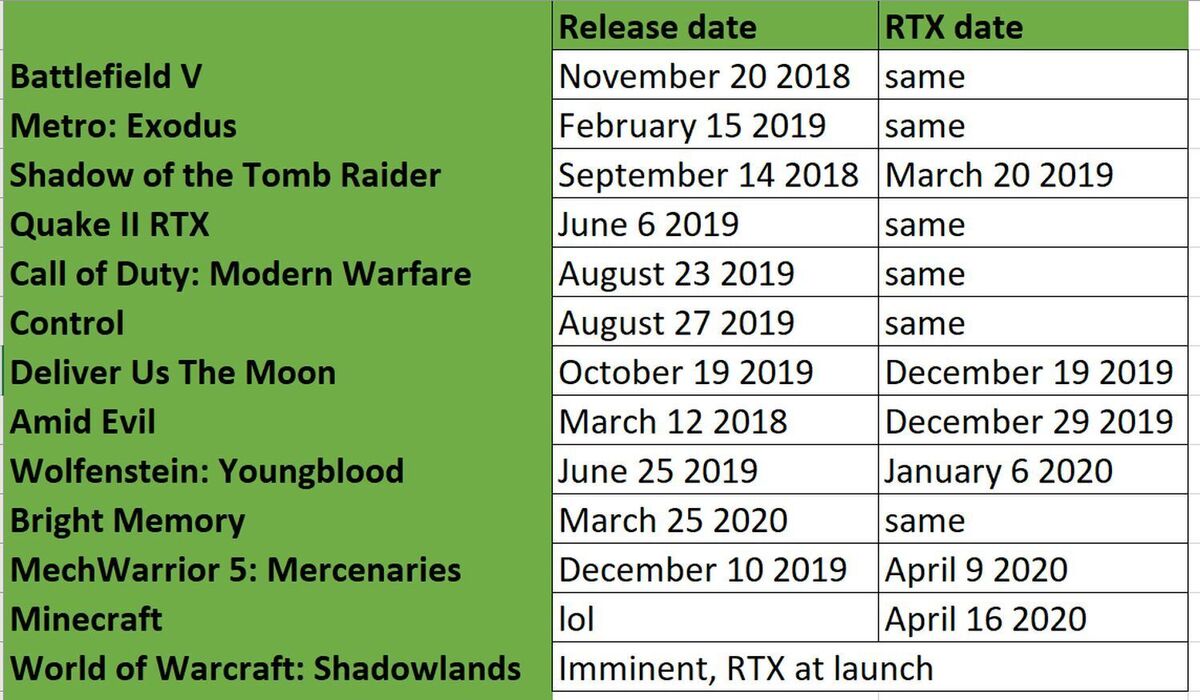 Brad Chacos/IDG
Brad Chacos/IDGIt’s been slow going in general for ray tracing adoption. A year after the GeForce RTX 20-series launch, only six games supported ray tracing, including a stunning fully path-traced version of Quake II developed by Nvidia itself. Two years later, the total will stand at 13 when World of Warcraft: Shadowlands launches imminently. (It’s already enabled on the beta servers.)
Thirteen games in two years aren’t a lot when you consider the steep investment required for real-time ray tracing. These pricey cards delivered the exact same traditional gaming performance as their similarly priced predecessors. Many people who bought into the RTX 20-series early did so specifically to play ray-traced games. There aren’t many, and of those that did happen, two of the AAA titles took six-plus months to deliver an RTX update, and five others are either niche indie games or reimaginings of ancient titles. Several games that Nvidia announced would support ray tracing haven’t, or haven’t launched whatsoever. That’s disappointing, and it was exacerbated by Nvidia marketing using “RTX” interchangeably with “ray tracing” when it could also mean a game would get DLSS, too.
The look of the ray tracing itself hasn’t always wowed either. Modern games can’t universally enable ray tracing without tanking the frame rate, which is why you only see older titles like Minecraft and Quake II RTX use full-blown path tracing for all lighting. Ray tracing is literally game-changing for those two games, and they look stunning. Modern titles need to pick and choose which ray tracing effects to enable, and most implementations have felt more like nifty extras than a must-have feature. I’d rate Metro: Exodus and Control as the only AAA games with game-changing, eyeball-melting ray tracing implementations over the GeForce RTX 20-series’ lifespan on store shelves.
But Nvidia’s landed some big fish during the past two years. Minecraft is the biggest game in the world and the best showcase of ray tracing wondrous potential. Call of Duty is the best-selling franchise year after year, and it’s onboard. It’s coming to World of WarCraft. Control and Metro: Exodus were two of the best games of the past year and they supported ray tracing on day one. Battlefield and Tomb Raider each have hordes of devoted fans.
And ray tracing very much looks to be on the upswing. The next-gen PlayStation 5 and Xbox Series X will support the technology, along with AMD and Intel’s future GPUs. Now that Nvidia’s cutting-edge GPUs established the technology and all the major gaming products are hopping on the bandwagon, developers appear ready to dive in more deeply too. The hotly anticipated Cyberpunk 2077 already announced plans to support ray tracing effects, along with a lineup of heavy-hitting upcoming PC games: Watch Dogs Legion, Vampire: The Masquerade – Bloodlines 2, Dying Light 2, and Crysis Remastered. Expect to see many more announced once the new consoles are fully unveiled.
None of that would have happened without Nvidia forcing ray tracing—long considered the Holy Grail of gaming graphics—into existence.
DLSS keeps getting smarter
The other half of the RTX package, Deep-Learning Super Sampling is a technology exclusive to Nvidia, unlike ray tracing itself. It launched with big promises of widespread game support and impressive visual fidelity, but the first iteration of the technology mostly disappointed, and many games never actually rolled out DLSS. DLSS 2.0 kicks all kinds of ass though, and like ray tracing, it’s gaining traction.
The tensor core section of our Turing GPU deep-dive goes into DLSS in greater detail, but essentially, it runs games at lower resolution, then uses machine learning to upsample the image to a higher fidelity with (ideally) no loss in quality. That lets games run at massively higher frame rates than they would if they were running at native resolution, making it the perfect counterpart to ray tracing, which imparts a significant performance penalty when it’s active. The AI can also be tuned to scale back the performance boost to improve image quality instead—some scenes can actually look better than they do natively with the help of Nvidia’s supercomputer. And the technology’s benefits also apply to traditional, non-ray-traced games too.
DLSS landed with a thud, however. Its implementation in Battlefield V looked terrible out of the box, as mentioned above, and the Vaseline-smearing effects never fully went away even after several quality updates. And while the performance boost of DLSS made playing Metro: Exodus with ray tracing possible, the game’s first implementation of the technology looked just as awful. Fortunately, a fast-arriving patch fixed the most egregious issues for the RTX flag-bearer, though enabling DLSS never quite looked as good as running the game at native 4K. The beauty of using AI to upscale gaming visuals is that it can always get smarter.
Nvidia definitely overpromised with the first iteration of DLSS, and not just its visual quality. Between its RTX launch event, Gamescom, and GTC Japan in 2018, Nvidia announced over 25 games destined to enable DLSS. Only eight of those games actually support DLSS today, while heavy hitters like PlayerUnknown’s Battlegrounds and Ark: Survival Evolved are prominent no-shows. Here’s the full list, with games that currently support DLSS in bold:
- Ark: Survival Evolved
- Atomic Heart (UNRELEASED)
- Battlefield V
- Control
- Dauntless
- Final Fantasy XV
- Fractured Lands
- Hitman 2
- Islands of Nyne
- Justice Online
- JX3
- Mechwarrior 5: Mercenaries
- PlayerUnknown’s Battlegrounds
- Metro: Exodus
- Remnant: From the Ashes
- Serious Sam 4: Planet Badass
- Shadow of the Tomb Raider
- The Forge Arena
- We Happy Few
- Darksiders III
- Deliver Us The Moon
- Fear the Wolves
- Hellblade: Senua’s Sacrifice
- KINETIK
- Outpost Zero
- Overkill’s The Walking Dead
- SCUM
- Stormdivers
Echoing what we said in the ray tracing section, that’s disappointing. Not even a third of the games that Nvidia said would get DLSS during the GeForce RTX 20-series’ launch window wound up supporting it, and the visual quality of the upscaling in games that did support DLSS sometimes disappointed in the first year. Some high-profile games wound up adding DLSS that weren’t part of the original announcement (most notably Monster Hunter World and Bioware’s Anthem, in addition to the ray-traced games) but again: You never get a second chance to make a first impression.
And that’s too bad, because while the first iteration of DLSS suffered rough patches, Nvidia’s DLSS 2.0 absolutely rocks.
“Nvidia’s wholly new DLSS 2.0 implementation quells pretty much every complaint about the first version, as Nvidia claims DLSS 2.0 is much faster, much better looking, much less restrictive, and much easier for developers to work into their games,” I wrote when DLSS 2.0 was announced.
It’s proven out in countless games: Minecraft, MechWarrior 5: Mercenaries, Wolfenstein: Youngblood, Deliver Us The Moon, and Death Stranding all support DLSS 2.0 and it sends frame rates through the roof with none of the visual compromises common to the first version. DLSS 2.0 is so good, Remedy overhauled Control to swap DLSS 1.0 out for DLSS 2.0, and F1 2020 just added it even though the game doesn’t include ray tracing. DLSS 2.0 can make any game run massively faster with an imperceptible (or even beneficial) change in visual quality, and who doesn’t want that?
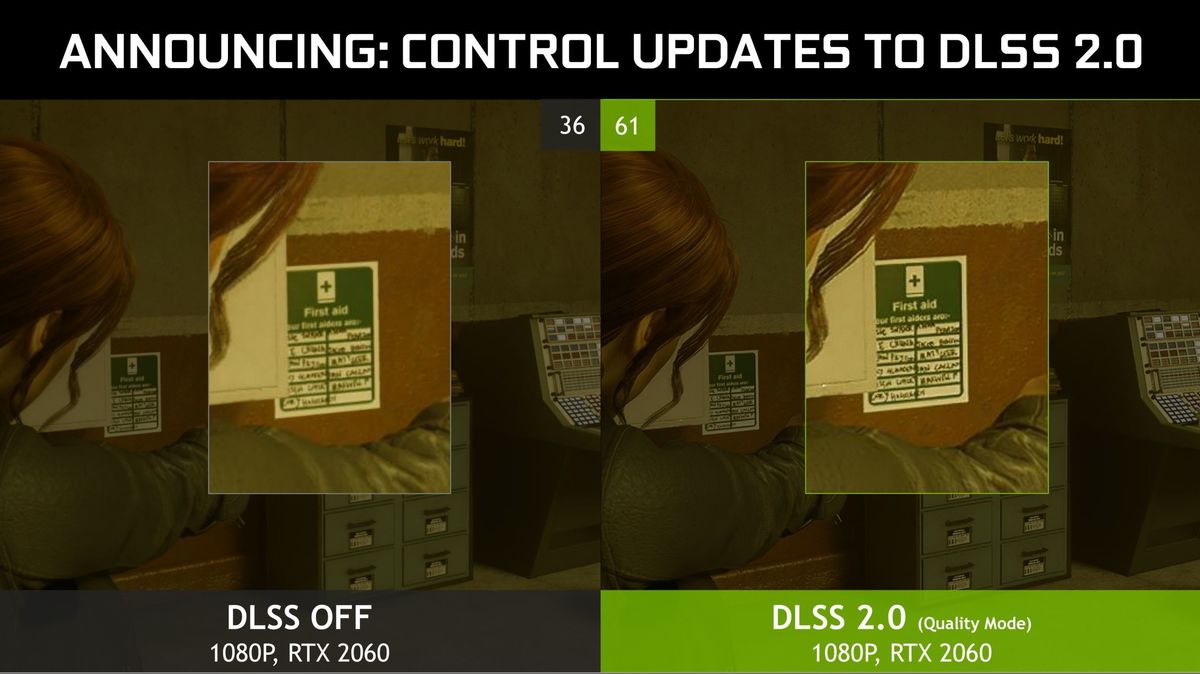 Nvidia
Nvidia
Not only does Control run much faster with DLSS 2.0 on, as evidenced by the frame rate counters, but small text and other fine background imagery appears more clear.
Nvidia claims that any game that supports TXAA anti-aliasing (and there’s a lot of them) can hook into DLSS with minimal hassle, and I hope that more do going forward. There’s no perceivable downside at this point, and plenty of upside. And it’s worth noting that all those high-profile triple-A games that are getting ray tracing in the near future—Cyberpunk 2077, Watch Dogs Legion, Vampire: The Masquerade – Bloodlines 2, Dying Light 2, and Crysis Remastered—all plan to support DLSS as well.
But while Nvidia can rely on widespread industry adoption to help push ray tracing forward, DLSS is a proprietary secret sauce for Team Green alone; consoles and rival GPUs can’t tap into RTX tensor cores. That could limit its upside even with Nvidia controlling 80 percent of the discrete GPU market on PCs—but I hope not. If Nvidia’s GeForce RTX 30-series brings the RT and tensor cores underpinning the entire RTX experience to its full graphics card lineup, rather than limiting these technologies to high-end options alone, DLSS 2.0 has amazing potential.
Bottom line
And that’s what early adopters bought into with the GeForce RTX 20-series: Potential, and the opportunity to be one of the first gamers to land ray tracing—the Holy Grail of gaming graphics.
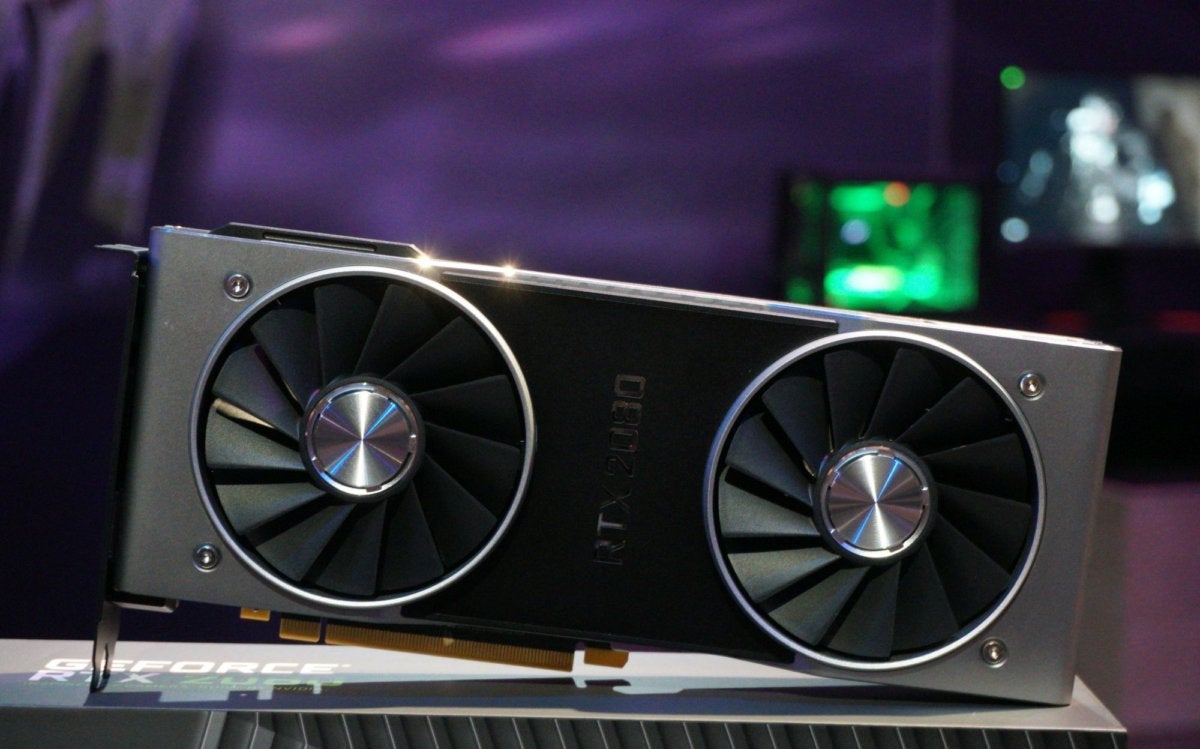 Brad Chacos/IDG
Brad Chacos/IDGTwo years later, it’s clear why we always say that you should buy hardware for what it can do today, not what its creators say you can do in the future. Nvidia’s grand RTX reveal promised that a wide range of games would support ray tracing and Deep Learning Super Sampling, but only a fraction of that came to pass during this RTX 20-series’ lifetime, and the first generation of DLSS did not live up to the lofty visual expectations set by Nvidia. Adding to the hurt, Nvidia’s new-look graphics cards carried an incredibly steep price premium for people wanting to bet on ray tracing. It’s called the bleeding-edge for a reason folks.
On the eve of the GeForce RTX 30-series launch, only seven triple-A games and 13 total titles support ray tracing, and I’d only consider four of them must-play ray tracing experiences: Minecraft, Control, Metro: Exodus, and Quake II RTX. They’re absolutely stunning, but that’s fewer games than I have fingers on one hand, and two of them are decade-old games. Fewer than 15 games support DLSS, and many of those are the same ones that support ray tracing.
That said, while the practical impact of RTX for early adopters largely hasn’t materialized during the GeForce RTX 20-series lifespan, the long-term impact can’t be understated. The advancements inside Nvidia’s Turing GPUs now serve as the backbone for DirectX 12 Ultimate itself, and marrying key features on both console and PC should indeed serve as a “force multiplier” for ray tracing adoption. We’re already seeing more triple-A games hop on board as the next console generation nears. DLSS isn’t part of that as a proprietary Nvidia technology, but after working out the kinks, DLSS 2.0 is flat-out fantastic, and I hope developers adopt it in droves once it’s common throughout the GeForce lineup.
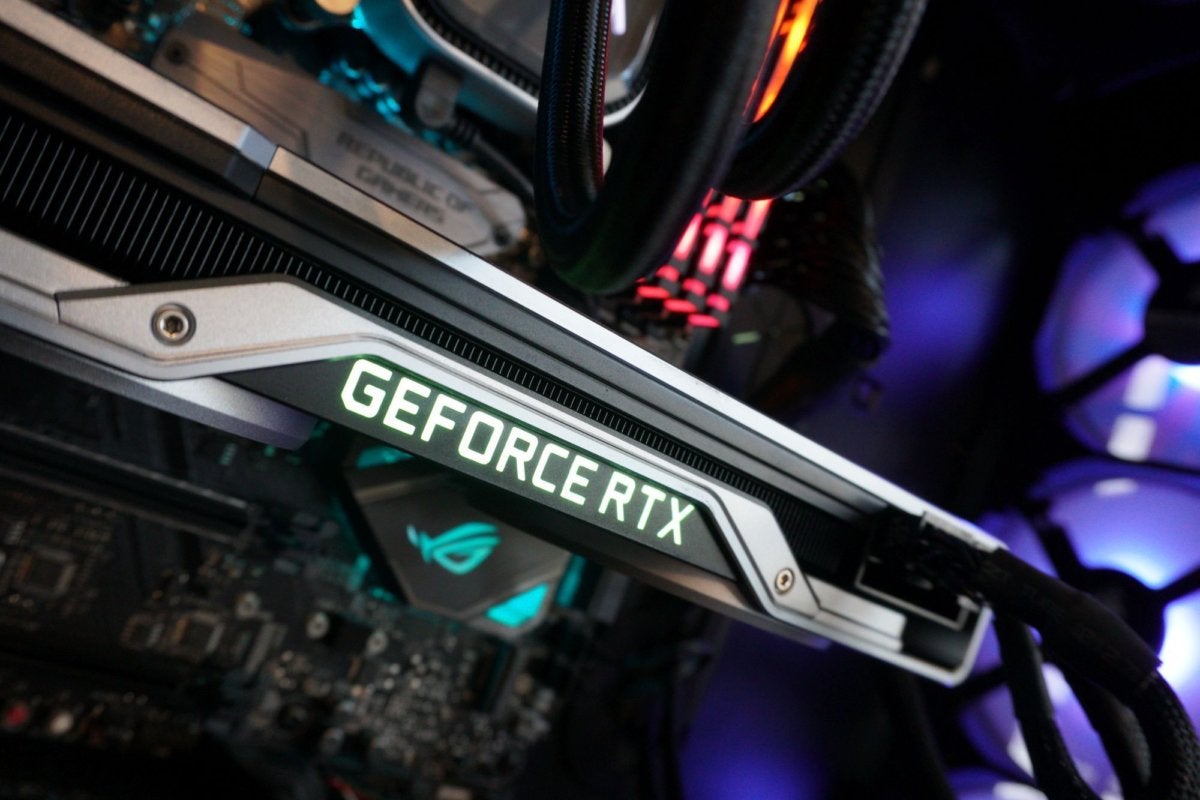 Brad Chacos/IDG
Brad Chacos/IDGSo yes, the state of ray tracing and DLSS during its debut generation may be slightly disappointing for gaming enthusiasts who paid unprecedented prices to get in on the action, but the birthing pains and big bets that Nvidia took over the past two years have set it up well for the future. The GeForce RTX 20-series achieved things that no other graphics card has before and now the industry is following suit. Two years after RTX’s flashy arrival, the GeForce RTX 30-series will also ask you to buy into ray tracing’s potential more than the current reality—but it’s a much surer bet now that its predecessor laid the hard groundwork and several colossal games are on board.
Fortunately, if the floodgates of RTX-supporting games do open in the wake of all this new hardware, your GeForce RTX 2080 Ti or RTX 2070 should still work just fine. These first two years may have been slow going, but most people hold onto their graphics cards for a lot longer than that.
